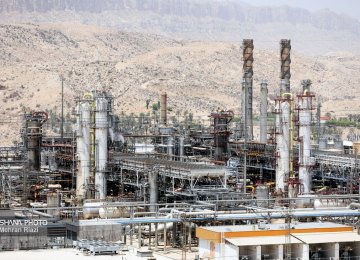From a $115-per-barrel high in June last year, oil prices were cut by half in January and touched 11-year lows this week. The downward trend has marked a distressing spell for international oil companies and countries relying heavily on oil revenues such as Iran, Russia and Saudi Arabia.
The sharp decline in prices that started in mid-2014 has had major international analysts and market watchers make mixed predictions on the future of oil, often drawing a rocky path for recovery in the long run, with some sticking to more promising scenarios.
But just how accurate some of these forecasts have been and how will they impact the oil market and producers? Let’s take a look at a handful of these predictions in late 2014 and early this year.
The US Energy Information Administration predicted in December 2014 that the average price of Brent crude and WTI in 2015 will close in on $68 and $62 a barrel, respectively.
In February, American banking services Citigroup correctly anticipated that the Organization of Petroleum Exporting Countries will not drop its pump-at-any-price policy throughout 2015, but predicted $54-a-barrel oil for the year.
Igor Sechin, the head of Russia’s largest oil company Rosneft, speculated in February that oil prices could settle between $60-80 a barrel by the yearend, a far cry from the current prices that look set to end the year below $40 a barrel.
But even notable figures such as the OPEC Secretary-General Abdalla El-Badri cannot help but make far-off projections. Badri said in January that oil prices could shoot up to more than $200 a barrel without enough investment in oil and gas, without mentioning a timeframe. The US crude benchmark slumped by 2.7% following his comments.
In a more recent forecast, Goldman Sachs, American investment banking firm, said the global oil glut could drive prices as low as $20 a barrel, a bold statement that sent a shockwave through global markets.
To discuss oil market predictions or take major corporate decisions based on such forecasts, several points should be put into perspective.
First and foremost, predictions cannot give a major insight into the future; a prediction is simply a prediction that may go the opposite direction.
From investors to market watchers and governments, people seem to put too much faith in forecasts of major global financial institutions or experts. But more often than not, the prophecies of these reputable individuals and entities fall short despite adopting apparently more standardized techniques in tracing future market trends.
Unexpected Twists
It is virtually impossible to consider all the factors that could possibly affect the oil market, thus making long-term forecasts less reliable and more prone to error. In this regard, 2015 has been a particularly difficult year for oil predictions because of its unexpected twists.
The historic agreement in July over Tehran’s nuclear program and the prospect of additional Iranian crude in the post-sanctions period started to weigh heavily on the already oversupplied market halfway through the year.
This is while many pundits did not anticipate a happy ending for nuclear talks between Iran and six world powers, at least in 2015, and consequently failed to factor in the potential impacts of the deal on the oil industry.
In addition, there were optimisms that the Organization of Petroleum Exporting Countries, led by its largest exporter Saudi Arabia, will change tack and reduce excessive production aimed at driving high-cost producers such as US shale firms out of the market and heaping fiscal pressure on rivals such as Iran and Russia.
But any such hopes faded when OPEC effectively ignored its self-imposed 30-million-bpd ceiling in its last summit of the year on Dec.4—a decision that sent prices tumbling from $43 to $32-per-barrel range last seen in 2004.
OPEC is producing nearly 2 million bpd above the ceiling and the failure to reach an understanding in its Dec. 4 summit made Iran and other producers all the more determined to keep pumping more for market share.
If predictions were to do any good, they could help major oil economies prepare for big cuts in their budgets for 2016.
Earlier this month, Iran’s First Vice President Es’haq Jahangiri said Tehran “never expected oil prices to fall below $60” and plunge to as low as $30 a barrel, a major dent in national revenues that will irrevocably hurt domestic economy. Iran is expected to set its next year’s budget based on $40-45 oil.
Russian President Vladimir Putin also warned that his country should be prepared for durable financial challenges presented by a long period of low oil prices, with a 2016 budget based on $50 oil.
According to Swiss author and businessman Rolf Dobelli, predictions are a win-win for experts.
“If they strike it lucky, they enjoy publicity … If they are off the mark, they face no penalties.”
It is important to consider a reasonably healthy margin of error for predictions, especially in the oil industry, and look at headline-grabbing projections with more tact and caution; because, after all, predictions cost nothing to make.











